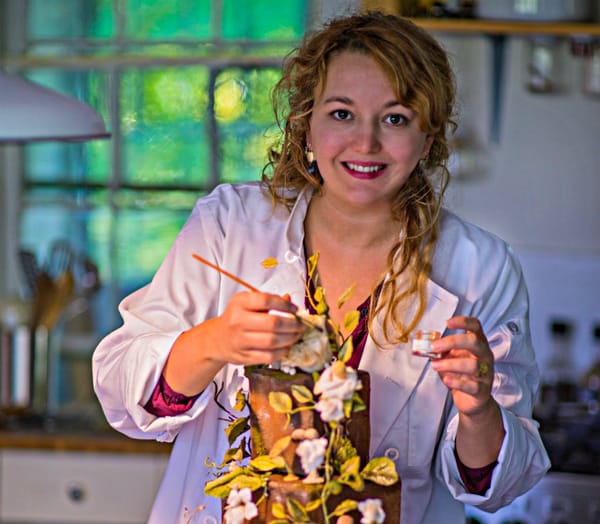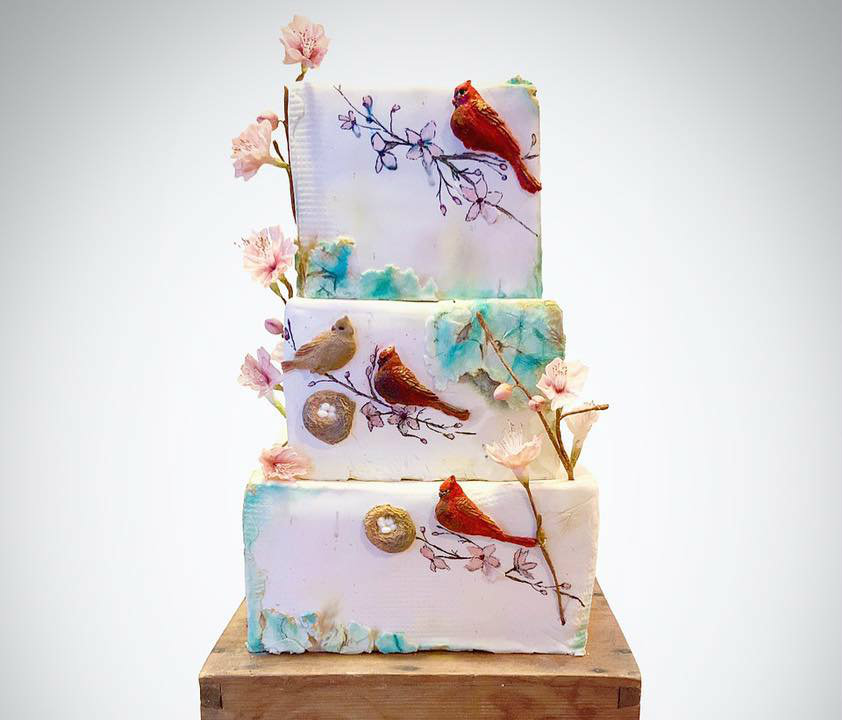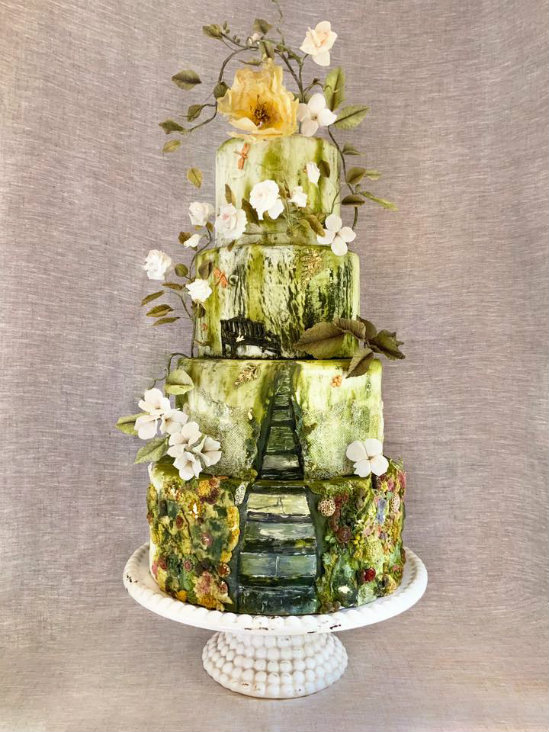Confectionary Art: Mamie Brougitte Cakes Are Stunning Masterppieces
Marion Attal combines artistry and alchemy in her edible showpieces.

Marion Attal combines artistry and alchemy in her edible showpieces.

Marion Attal’s cakes are, simply, too exquisite to eat. And yet…they are made with her own homemade butter, and eggs from North Plain farm; infused with soaks of elderberry and rose water syrup, rum or bourbon; filled with pistachio cream, apricot fennel compote, or rhubarb Earl Grey confiture; frosted with vanilla bean, cream cheese chocolate, praline or peanut butter. Despite their outer beauty, you wouldn’t want to deny yourself a slice. And those stunning focal flowers — well, more on those later.
“I want them to taste as good as they look,” says Attal, the artist/baker behind Mamie Brougitte Cakes, based in West Stockbridge, Mass. Her cakes have traveled (and she with them) to clients all over the country. Each cake is customized according to the client’s vision, discussed during a taster meeting. Attal translates the idea into a sketch — and then into an edible fantasy.
Did the baking come first? Or was it her artistry that inspired Mamie Brougitte Cakes?

Yes, these are sugar flowers. Photo: Dani Fine Photography
They developed alongside each other, it seems. Attal’s grandmother, the bakery’s namesake, taught her to bake, and the arts were always a force at home in Brooklyn.
“My mom is an artist and my dad a filmmaker, so art was very present in my childhood,” she says. It was while living in South Africa as a young adult that her baking genes came to the fore — as a necessity. Realizing her dreams of doing theater were unlikely to happen in her small South African town, she turned to baking, making pumpkin whoopie pies and beetroot cupcakes to sell at a farmers market. Customers began asking her about cakes, which she wasn’t particularly interested in. But then she discovered sugar flowers, and a whole new world of possibilities opened up.
It took a couple of years to get the level of skill set she envisioned, and four years ago she moved back to the U.S., settling in the Berkshires at her mother’s suggestion. It made sense; in South Africa she’d been using farmers’ produce, something she could easily do in the Berkshires. A year later, she started pursuing her cake business and met Maggie Austin, a world-renowned cake baker who became her mentor, teaching Attal the basics of the astonishingly realistic sugar flowers that have become the specialty of Mamie Brougitte cakes.
The flowers are not meant to be eaten (“They’re edible, but don’t have a particularly nice taste”) but are more than decorative. They last forever, as long as they don’t get wet. Another benefit sugar flowers offer: Attal can create flowers out of season, or in any color you might not find in nature.
“I tell my clients, enjoy the cake, keep the flowers as a keepsake. I can arrange them in a glass dome if my client wants that,” Attal says. She also makes bouquets. All sugary creations.
Crafting the flowers involves painstaking technique. Attal makes a gum paste of egg whites, Crisco, confectionary sugar and a thickening agent, colors the paste, and uses a pasta roller to thin it out. She uses flower cutters (like cookie cutters) and tools to pare the thickness of each petal and give it its shape, then builds out the petals. A rose takes an hour to create, a peony two hours. Beyond flowers, Attal also decorates the cake by painting it and adding other three-dimensional elements.
Slices start at $10, and depending on the decorative elements, goes up from there. An example: The cake she created for the Love Shack, an event space in Brooklyn, has four tiers, with handpainting, edible lace, sugar flowers and a sugar flower garland, plus three sheet cakes to make 60 slices. Including delivery to New York, the cost was $3,200. It took 45 hours to make.
“The delivery process is the most stressful and delicate part of cakemaking,” says Attal. “I would never leave that to chance by shipping it. I drive it myself if possible.” Or she’ll fly it to the client herself.
For transport, the cake is placed in a cake safe, a box built by a cakemaker that has plexiglass walls built around the cake. The roof of the box has a pillar that goes straight through the cake and anchors the bottom parts. If she needs to fly it to the client, Attal will make one layer a real cake, create faux tiers for the others, and provide a sheet cake to make up the number of pieces required.
Attal makes her cakes at home, which is outfitted with a commercial kitchen, or will rent a kitchen when necessary. Pre-pandemic, she had plans to open her own space. Her orders were canceled the first couple of months, of course, but in June, she started getting requests, although all the cakes she’s made have been small ones.
“People who decided to go forward with their events this year had to make so many compromises, they really wanted to splurge on a cake,” she says. “The small cakes are highly decorated. I had to rethink how to make things work visually for the downsized cakes, exploring the more petite world. It was a challenge.”
In the spring, Attal will take up residence in an upcoming art gallery in Lenox, where she’ll be creating her artistic cake elements in view of visitors. In a period of uncertainties, this we know: Flowers will be blooming in the Berkshires.



